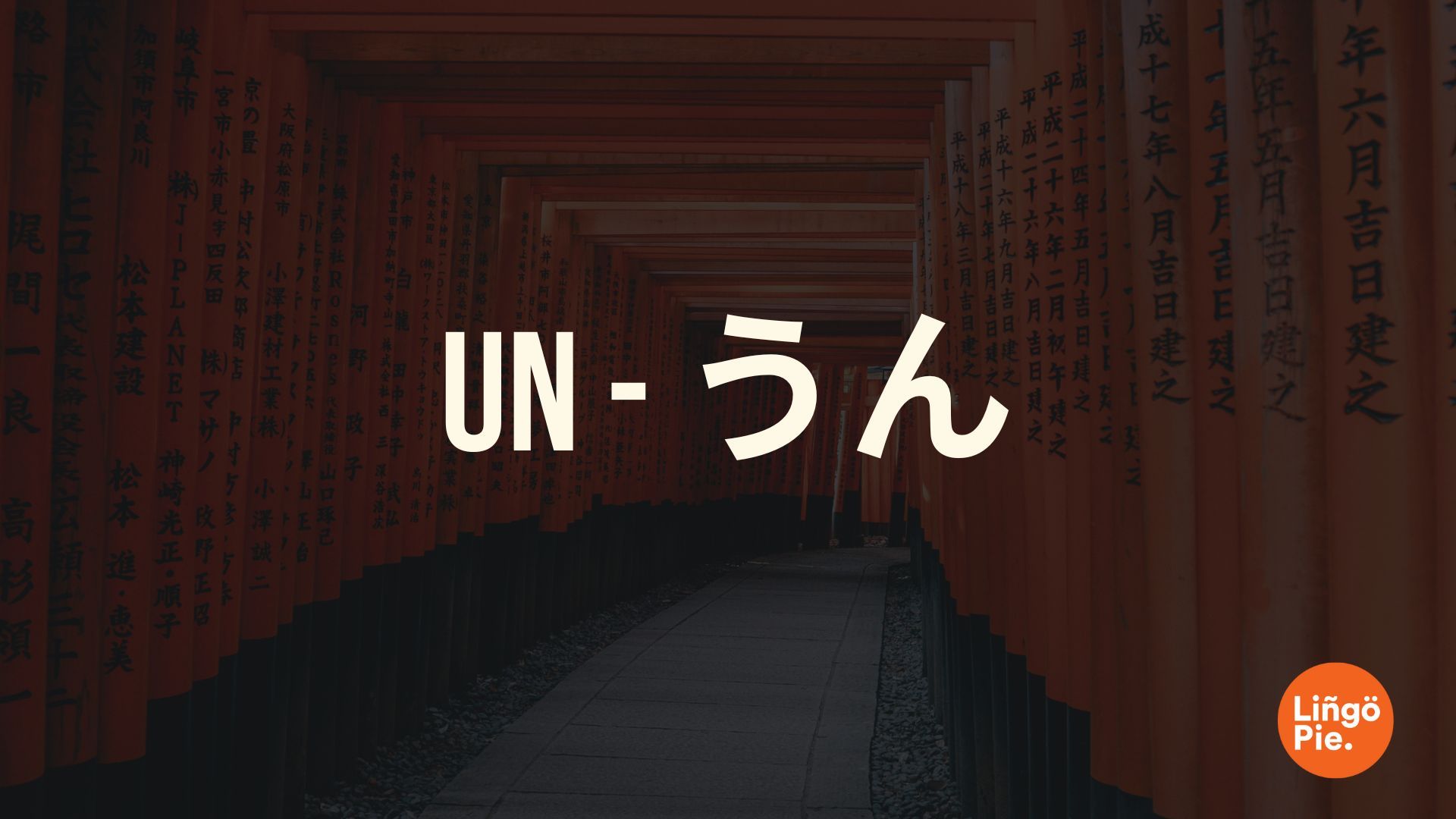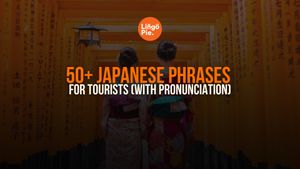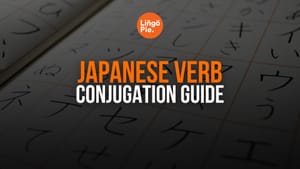When I landed in Sumida Tokyo as an ALT, I thought I knew enough Japanese to get by. Boy, was I wrong! My first week, I embarrassed myself countless times by using the wrong version of yes in Japanese in different situations. My students erupted in laughter when I casually answered the principal with "un" instead of "Hai, onegai shimasu", and my co-teachers constantly rescued me from awkward social blunders.
In this post, I’ll show you 5+ easy ways to say yes in Japanese that'll help you with everyday conversations. You’ll learn exactly when to use each expression, how to pronounce them correctly, and the subtle social rules that native speakers follow naturally.
Don’t worry—all these will be super easy to pick up and practice. Ganbatte!
- No In Japanese: 5 Easy To Politely Refuse In Japanese
- 8 Easy Ways To Say Thank You In Japanese Like A Native Speaker
- How To Write The Japanese Kanji For Love [Guide]
How To Say Yes In Japanese
Hai - はい

Hai (はい) is the most common way to say "yes" in Japanese and works in virtually all situations. This is the first word you should learn as a beginner because of its versatility. Japanese people use はい much more frequently than English speakers use "yes" since it functions as both an affirmative response and a filler word to show you’re actively listening.
The Japanese hai or はい sounds similar to English "hi" but with important differences. Pronounce the "a" like in "father" but shorter, and make a clear distinction between the two syllables (ha-i). Keep it short and crisp rather than drawing out the sound.
Remember that hai (はい) is a form of saying yes in Japanese that can be used when:
- Answering any question affirmatively (formal or casual)
- Acknowledging you understand something
- Answering the phone
- Showing you're listening during a conversation
- Responding when someone calls your name
- As a polite response when someone thanks you
Ee - ええ

Ee (ええ) is a more conversational way to say "yes" in Japanese that works well in everyday, casual situations. Think of it as a relaxed version of "hai" that you’d use with friends, family, or colleagues you’re comfortable with. Personally, I noticed my Japanese co-teachers often used this form when chatting informally in the staff room (or when there are no students around).
Pronounce "ee" like a slightly extended version of the "e" in "bet." It should sound like you're saying the letter "A" in English but drawn out a bit longer. Japanese speakers often add a slight rising tone at the end, almost like a subtle question.
This way of affirming in Japanese is best used when...
- Responding to someone you know well
- Informal settings where politeness isn't required
- When you want to sound more natural and less textbook
- In situations where you’re comfortable and relaxed
Daijoubu desu - だいじょうぶ です

Daijoubu desu (だいじょうぶです) is a versatile Japanese phrase that can mean "yes" in specific contexts, particularly when someone is offering you something or asking if you need help. It literally translates to "it's okay" or "it's alright," but Japanese people often use it as an indirect way of saying "yes, that's fine" or "yes, I'm good."
I understand that this is quite long, so when pronouncing it, I highly recommend breaking it down: dai-jou-bu de-su. The "ai" in "dai" sounds like the English word "eye." "Jou" has a longer "o" sound (like in "Joe" but stretched). "Bu" is a short syllable with the "u" barely pronounced. "Desu" sounds like "dess" with a barely audible "u" at the end. The stress generally falls on "jou" when pronouncing the full phrase.
This is best used in situations...
- When someone asks if you're okay (Are you hurt? → Yes, I'm fine)
- When declining an offer politely (Would you like more tea? → No thanks, I'm good)
- When confirming something is acceptable (Is this seat okay? → Yes, that's fine)
- When someone asks if you need help (Do you need assistance? → No, I'm okay)
- When reassuring someone not to worry (Are you sure? → Yes, don't worry)
This phrase shows how the Japanese often prefer indirect communication. Rather than a direct "yes" or "no," using だいじょうぶです conveys your meaning while maintaining harmony and politeness in the conversation!
Ii desu - いいです

Ii desu (いいです) is a way to say yes in Japanese when responding to a suggestion or offer. It simply means "it's good" or "that works for me." When I first arrived in Sumida, I heard this phrase constantly in restaurants, shops, and casual conversations.
When pronouncing it, remember that the "ii" sounds like a slightly extended "ee" sound (like in "see" but held a bit longer). "Desu" is pronounced like "dess" with the "u" at the end being nearly silent. When said together, "ii desu" flows naturally with a slight emphasis on the "ii" part.
If you only want to learn two phrases from this article, make them "hai" and "ii desu" - they'll cover 90% of the situations where you need to say "yes" in Japan!
- When ordering food: "Is ramen okay?" → "Ii desu" (Yes, that's good)
- Accepting a suggestion: "Should we meet at 3pm?" → "Ii desu" (Yes, that works)
- When someone offers a seat: "Is this spot okay?" → "Ii desu" (Yes, it's fine)
- When a shop clerk suggests an item: "How about this one?" → "Ii desu" (Yes, that's good)
Un - うん

Un (うん) is the most casual way to say "yes" in Japanese - think of it as the equivalent of "yeah" or "uh-huh" in English. Just note that this should be used with caution as it could make you seem rude or disrespectful (depending on the context). If you do want to use it, remember the following:
- Use only with close friends, family members, or peers
- In very relaxed, informal situations
- When texting friends (often written as うん or ん)
- NEVER use with teachers, bosses, elders, or people you've just met!
Pronounce うん with your mouth barely open, like a short "oon" sound from deep in your throat. It should feel almost instinctive—halfway between a word and a natural sound of agreement. The pitch typically starts slightly higher and drops at the end, mimicking the natural nodding motion. Try practicing while actually nodding your head for the most natural delivery.
Sou - そう

Sou (そう) and its variations are essential ways to express agreement in Japanese conversations. These phrases literally mean "that's right" or "it is so," making them perfect for confirming information or showing you’re following along in a conversation.
- Sou (そう) - Most casual, basic form (pronounced as so)
- Sou desu (そうです) - Polite form for most situations (pronounced as so-dess)
- Sou desu ne (そうですね) - Extra polite/thoughtful agreement (pronounced as so-dess-neh)
These expressions are frequently used in Japanese conversations and mastering them will significantly improve communication skills. Just remember that the appropriate form really depends on the social context and your relationship with the speaker.
Wakarimashita - わかりました

Wakarimashita (わかりました) functions as another common way to say "yes" in Japanese, particularly when you're acknowledging that you've understood instructions or information. This expression literally translates to "I understood" or "I got it," and it's incredibly useful in daily conversations.
The pronunciation requires careful attention to each syllable: "wa-ka-ri-ma-shi-ta." Say each part clearly with even timing, giving a slight emphasis to the "ri" and "ta" sounds. The "u" in "mashi" is nearly silent in natural speech.
For more casual situations, Japanese speakers shorten this to "wakatta" (わかった). This informal version carries the same meaning but signals closeness or familiarity. The Japanese pronunciation is more compact: "wa-kat-ta" with a slight emphasis on the middle syllable. Only use this shortened form with friends, family members, or peers in relaxed settings where formality isn't expected.
Mochiron - もちろん

Mochiron (もちろん) is an enthusiastic way to say "yes" in Japanese that translates to "of course" or "certainly." This expression conveys strong agreement or willingness, making it perfect for situations when you want to emphasize your positive response.
You can use mochiron by itself as a one-word answer, but it's often paired with other expressions for additional politeness. For everyday situations, you might say "Mochiron desu" (もちろんです), which adds a polite ending. In very formal settings, "Mochiron desu yo" (もちろんですよ) adds even more emphasis and politeness.
This expression works wonderfully in situations where someone asks if you can do something or if you agree with an opinion.
- For example, if someone asks "Can you come to the meeting tomorrow?" responding with "Mochiron!" shows your enthusiastic commitment.
- Similarly, if someone asks, "Do you like Japanese food?" answering, "Mochiron desu!" communicates not just agreement but genuine enthusiasm.
Remember that mochiron carries more emphasis than a simple "hai," so use it when you genuinely want to express certainty or enthusiasm rather than just basic agreement.
- 4 Best Japanese Cooking Shows Every Traveler Should See
- 6 Romantic Japanese Shows You’ll Fall In Love With
- 6 Best Japanese Documentaries To Learn Japanese
How To Practice Your Japanese "Yes" Responses
Now that you've learned these essential Japanese expressions for saying "yes," it's time to put them into practice! The best way to cement these Japanese words in your memory is through consistent, deliberate practice in realistic scenarios. To start, create simple practice dialogues that mirror real-life situations you’ll encounter in Japan.
For each scenario, try responding with the appropriate form of "yes" based on the social context. Practice saying these expressions aloud daily, paying close attention to your pronunciation and intonation. Record yourself speaking and compare it with native audio examples. Challenge yourself by mixing formal and casual situations to train your brain to select the right expression automatically.
If you're looking for the most effective way to practice saying yes in Japanese, then I highly recommend watching Japanese content. Watching Japanese shows, anime, and movies with dual subtitles allows you to observe how native speakers naturally use these different affirmative expressions in various contexts.
Accelerate Your Learning With Lingopie
Want to actually use these Japanese expressions instead of just memorizing them?
Lingopie shows you real Japanese in action through shows and movies you'll actually enjoy watching. You'll hear native speakers naturally switch between はい, うん, and そうですね depending on who they're talking to. It's like having Japanese friends teach you the language while you relax with your favorite shows!
Give Lingopie a try and watch how quickly these expressions become second nature!





![10 Best Spanish Short Stories For Beginners [Adults And Kids]](/blog/content/images/size/w1200/2023/12/Spanish-1-5.png)



